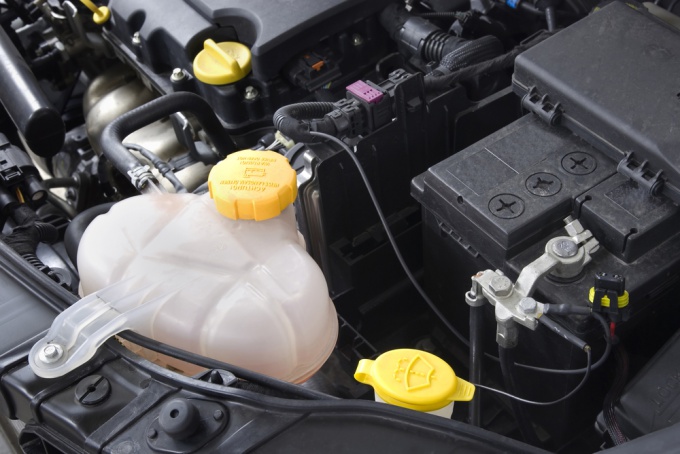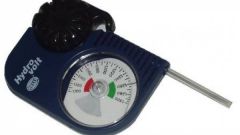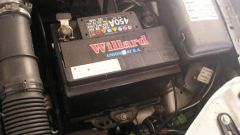You will need
- distilled water
Instruction
1
Clean the surface of battery
Surface cleaning of batteries is necessary for several reasons. First, the surface may be contaminated splashed sulfuric acid, that is unsafe for working and his clothes, and secondly, dirt may get inside the battery and cause it damage, thirdly, to work in clean pleasant. To clean the surface just gently wipe with a damp cloth, it is better moistened with a solution of baking soda. The deepening of upper lid, especially around the tubes (or water holes), clean better with a match.
Surface cleaning of batteries is necessary for several reasons. First, the surface may be contaminated splashed sulfuric acid, that is unsafe for working and his clothes, and secondly, dirt may get inside the battery and cause it damage, thirdly, to work in clean pleasant. To clean the surface just gently wipe with a damp cloth, it is better moistened with a solution of baking soda. The deepening of upper lid, especially around the tubes (or water holes), clean better with a match.
2
Add water
Pour only distilled water in those banks where the electrolyte level below the minimum mark. To determine this in a semi-transparent battery can be "risks" on the sides of the body. Inside water holes tides, indicating the upper and lower levels. If no tag, you should focus on a higher level of 10-15 mm above top of plates. Add water to the battery is best using a blower, a large medical syringe, or by using aerometer (or rather outer bulb) to measure the density of the electrolyte.
Pour only distilled water in those banks where the electrolyte level below the minimum mark. To determine this in a semi-transparent battery can be "risks" on the sides of the body. Inside water holes tides, indicating the upper and lower levels. If no tag, you should focus on a higher level of 10-15 mm above top of plates. Add water to the battery is best using a blower, a large medical syringe, or by using aerometer (or rather outer bulb) to measure the density of the electrolyte.
3
To measure the electrolyte density
The density of the electrolyte after the flushed water is not restored immediately. This is because in a battery between the plates has a number of small intervals, and mixing of fluids is very slow (sometimes the density is equalized in a few weeks). So, after add water, the battery settles within a few hours. Only then, the densities closer to the real, and it can be measured. For accurate determination of density is necessary to make several measurements at equal intervals of time. And if the difference between the present and previous measurements is negligible, the battery is ready for operation after recharging.
The density of the electrolyte after the flushed water is not restored immediately. This is because in a battery between the plates has a number of small intervals, and mixing of fluids is very slow (sometimes the density is equalized in a few weeks). So, after add water, the battery settles within a few hours. Only then, the densities closer to the real, and it can be measured. For accurate determination of density is necessary to make several measurements at equal intervals of time. And if the difference between the present and previous measurements is negligible, the battery is ready for operation after recharging.



